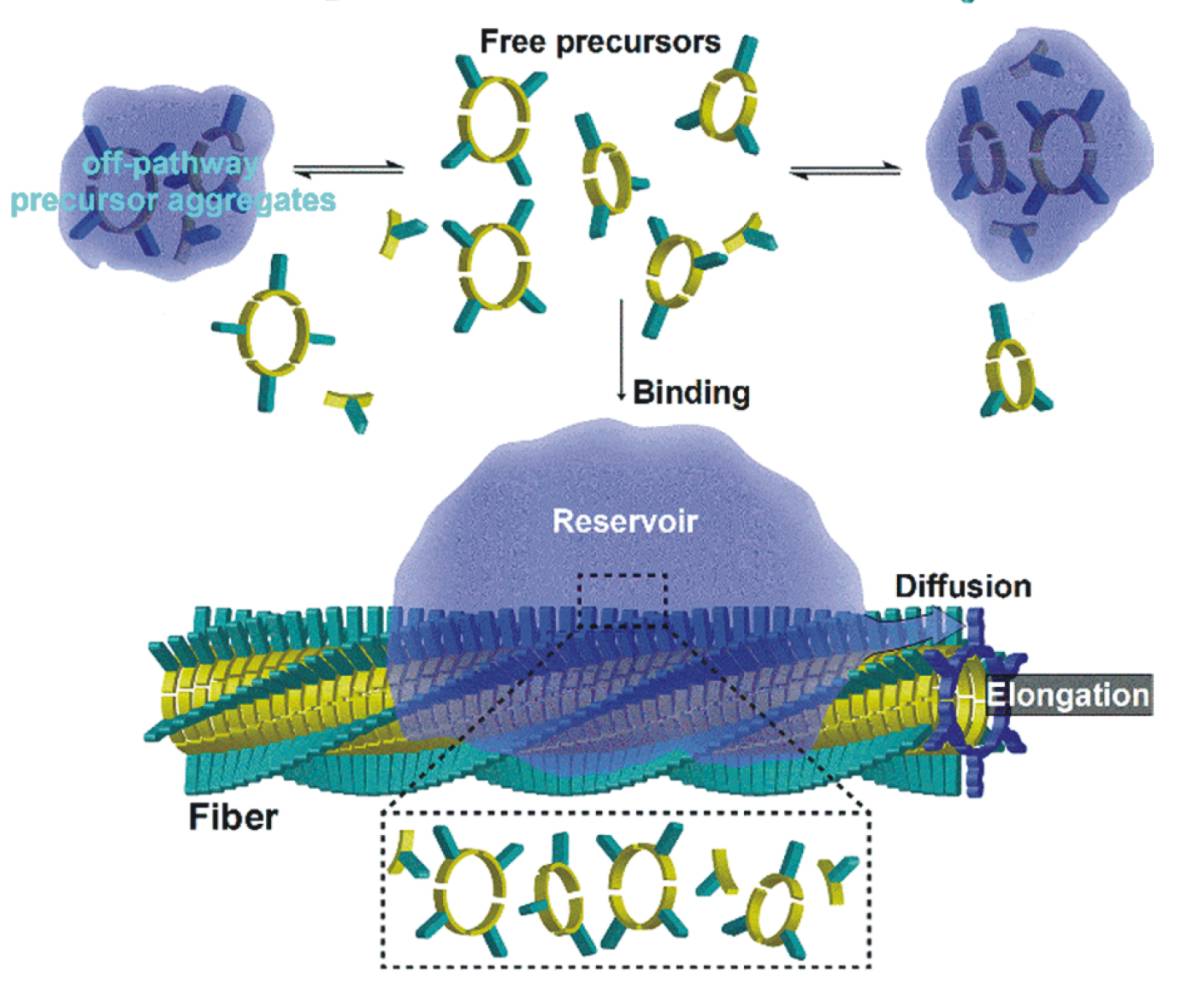New High Speed AFM results featured as Spotlight in JACS
In an all Groningen research effort the groups of Prof. Marrink (GBB), Prof. Otto (Stratingh) and Prof. Roos (Zernike) have been able to follow fibre self-assembly in real-time at the nanoscale. Using a combination of High Speed AFM and Molecular Dynamics simulations the groups were able to scrutinize the nanomentre-scale mechanisms of self-replicating molecule assembly. The results appeared in the Journal of the American Chemical Society (JACS) and were featured prominently as a JACS Spotlight.

The goal of the project was to uncover the assembly mechanism of self-replicating molecules. While the Otto lab had already close to 10 years of experience with the studied system, within weeks of starting the project important and completely unexpected new insights into the mechanism of replication were found. In brief, it was already known that self-replication involved assembly of molecules into 1D-stacks, where the assembly process somehow drives the synthesis of the assembling material from smaller components (precursors). The combined High Speed-Atomic Force Microscopy (HS-AFM) and Molecular Dynamics (MD) Simulations revealed that the stacks play an active role in the process by binding the precursors at the sides of the stacks, where they accumulate in reservoirs, and guiding them to the ends from which the stack grow (see animated HS-AFM .gif illustration). During this reservoir-assisted growth process the free precursors are added to the growing fiber (see figure) and thereby converted into the molecules that replicate.

Putting the findings in perspective
The broader significance of these findings for the field of self-assembly can be summarized as follows. In the assembly of one-dimensional objects (stacks or fibers) there is an obvious but mostly overlooked problem: the assembling material needs to find the growing end of the fiber. This is a 3-dimensional search problem that causes assembly to be slow as the number of fiber ends tends to be small (often in the nanomolar range). The researchers discovered that fibers can bind the assembling material at their sides and guide this material to the ends, thereby turning a 3-dimensional search problem into a 1-dimensional one and greatly enhancing the efficiency of assembly. This finding constitutes a new mechanism for the assembly of one-dimensional objects. Mechanistic insight into assembly pathways, like the one unveiled here, are keenly sought after, but remain rare.
By combining the data from the different single-molecule and bulk experiments, the molecular dynamics simulations and the kinetic modelling, the authors were able to make this step in our understanding of self-assembly processes. The work was published in J. Am. Chem. Soc. where it was also highlighted as a JACS Spotlight. Please see below for the links to the article and Spotlight.
References
Sourav Maity, Jim Ottelé, Guillermo Monreal Santiago, Pim W. J. M. Frederix, Peter Kroon, Omer Markovitch, Marc C. A. Stuart, Siewert J. Marrink, Sijbren Otto, and Wouter H. Roos
Caught in the Act: Mechanistic insight into Supramolecular Polymerization driven Self-Replication from Real Time Visualization; J. Am. Chem. Soc., 2020, Vol. 142, p. 13709–13717
Kristopher Benke
Why Rely on Chance? Recruiting Precursors for Enhanced Growth; JACS Spotlight
| Last modified: | 02 September 2020 11.50 a.m. |
More news
-
24 March 2025
UG 28th in World's Most International Universities 2025 rankings
The University of Groningen has been ranked 28th in the World's Most International Universities 2025 by Times Higher Education. With this, the UG leaves behind institutions such as MIT and Harvard. The 28th place marks an increase of five places: in...
-
05 March 2025
Women in Science
The UG celebrates International Women’s Day with a special photo series: Women in Science.
-
16 December 2024
Jouke de Vries: ‘The University will have to be flexible’
2024 was a festive year for the University of Groningen. In this podcast, Jouke de Vries, the chair of the Executive Board, looks back.
